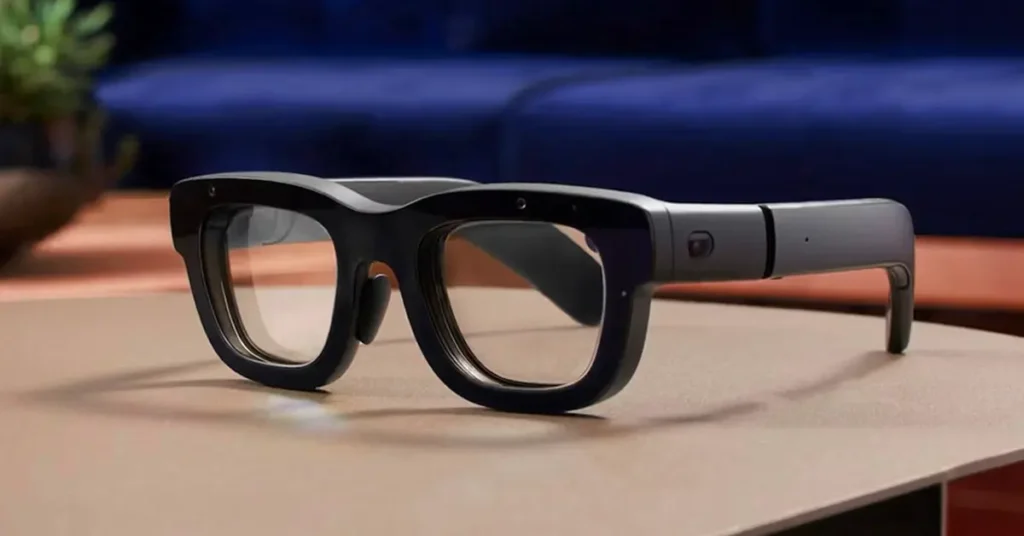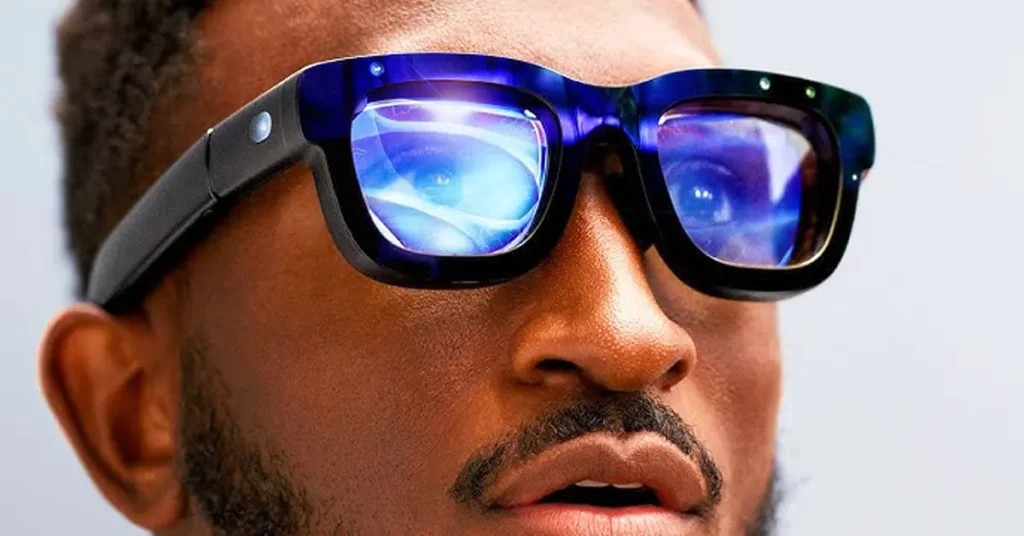If you thought smart glasses were still years away from becoming mainstream, think again. Meta’s upcoming display-equipped smart glasses, codenamed Hypernova, could be hitting shelves as early as next month — and at a surprisingly lower price than anyone expected.
According to a fresh report from Bloomberg’s Mark Gurman, the futuristic eyewear will start at $800, slashing earlier estimates that pegged the price between $1,000 and $1,400. That makes it almost the same cost as a brand-new iPhone 16.
But this isn’t just another pair of camera-equipped Ray-Bans. Hypernova is shaping up to be Meta’s boldest leap yet in wearable tech, and the company is banking on the lower price tag to spark interest among everyday users.
What Makes Hypernova Different?
The Ray-Ban Meta Smart Glasses already let you take photos, shoot short videos, and livestream directly from your face. But Hypernova takes things much further.
This upcoming version is expected to feature a tiny built-in display, tucked discreetly at the bottom of the right lens. Crucially, this screen will be visible only to the wearer, meaning you’ll be able to check notifications, maps, photos, and apps without pulling out your phone.
That makes Hypernova feel less like a gimmick and more like a genuine productivity tool — blending fashion with function in a way that Meta hopes will resonate with both tech enthusiasts and everyday consumers.
Controlled by a Wristband Called “Ceres”
Meta isn’t stopping at just glasses. To make interaction seamless, Hypernova will pair with a wrist-worn controller named Ceres.
If the name rings a bell, it’s because Meta first teased this device back in 2022. The wristband reportedly uses advanced sensors to detect subtle finger and hand movements, letting you control apps and navigate menus without touching the glasses directly.
This kind of gesture-based control could be a game-changer, making Hypernova stand out in a market where most smart glasses have been little more than a novelty.
Also Read: iPhone 17 Launch Event: Date, New Models, iOS 26, and Everything Apple Might Reveal
Specs and Software: What’s Inside
On the hardware side, Hypernova is expected to run on a Qualcomm chip. Instead of Meta’s in-house operating system, it will use a customized version of Android.
Here’s what users can expect on the home screen:
- Camera App – for quick photos and video capture.
- Gallery App – to view and manage your shots right on the display.
- AI App – Meta’s answer to integrating smart assistance into your daily routine.
Navigation will be made easier thanks to capacitive touch controls built into the arms of the glasses. So even if you don’t want to use the wristband, you’ll still be able to swipe and tap your way through the interface.
The Big Price Cut
Back in April, Gurman reported that Hypernova could cost anywhere between $1,000 and $1,400. That figure instantly raised eyebrows, as it would’ve put Meta’s smart glasses in the same price territory as premium smartphones and even some laptops.
But the new report brings welcome news: the price has been slashed to $800.
Why the sudden drop? According to Gurman, Meta is accepting lower profit margins to drive adoption. It’s a common strategy when launching groundbreaking products — build demand first, then figure out long-term profits later.
For comparison:
- Ray-Ban Meta Smart Glasses – start at $299
- Meta Quest 3 headset – starts at $499
- Apple Vision Pro – starts at $3,499
At $800, Hypernova sits right in the sweet spot. It’s far more advanced than Ray-Bans, significantly cheaper than Apple’s Vision Pro, and only slightly pricier than Meta’s own Quest 3 headset.

Fashion and Prescription Options
The $800 base model is just the starting point. If you want different styles, color variations, or prescription lenses, you’ll need to pay extra.
That said, Meta’s partnership with Ray-Ban already showed the company understands how important style is when it comes to wearables. Unlike bulky VR headsets, Hypernova aims to be something you can wear comfortably all day, without feeling self-conscious.
Also Read: Samsung’s Jaw-Dropping 115 Inch Micro RGB TV Could Change How We Watch
Launch Timeline: When to Expect Hypernova
Earlier reports only hinted that the new glasses would arrive sometime in 2025. But Gurman’s latest update narrows things down significantly.
He now claims Hypernova will be “unveiled next month.” That lines up with September — the same period when Apple traditionally dominates headlines with its annual iPhone launch event.
Meta may be trying to steal some spotlight from Apple, showing the world that the future of computing isn’t just about smartphones, but about wearables too.
Other Smart Glasses in Meta’s Lineup
It’s worth noting that Meta has been steadily expanding its smart glasses portfolio. Just two months ago, the company launched its Oakley-branded Smart Glasses, designed with athletes in mind.
Those glasses start at $499 and come with performance-focused features, offering a spec bump over the Ray-Ban models (which cost between $200 and $400).
Meanwhile, Meta is also working on Project Orion, a futuristic eyewear prototype first teased at the Meta Connect conference. Unlike Hypernova, Orion is envisioned as the ultimate fusion of VR and AR — packing the power of a Quest 3 headset into a lightweight, fashionable pair of glasses.
CEO Mark Zuckerberg has even called them “the most advanced glasses that the world has ever seen.”
Hypernova, then, seems to be a stepping stone product — advanced enough to excite consumers, but not as experimental (or expensive) as Orion will likely be.
Why Hypernova Could Be a Big Deal
For years, tech companies have been trying — and failing — to make smart glasses cool. Google Glass flopped spectacularly. Snap Spectacles never took off. Even most VR headsets have remained niche.
But Meta has a few advantages this time around:
- Lower Price Point – $800 is high, but not outrageous compared to other cutting-edge devices.
- Everyday Utility – The ability to check apps, maps, and notifications without a phone could be genuinely useful.
- Fashion-First Design – Partnering with Ray-Ban and Oakley makes the glasses look like actual eyewear, not futuristic goggles.
- Ecosystem Tie-In – With Meta’s AI tools, AR research, and Quest VR experience, the company can integrate features others can’t.
If Meta plays its cards right, Hypernova could finally push smart glasses into the mainstream.
The Competition
Of course, Meta isn’t alone in this race. Apple is heavily investing in its Vision Pro line, and rumors suggest a more affordable model could arrive in the coming years. Google, Samsung, and other players are also quietly exploring AR wearables.
But right now, Meta seems to have found the sweet spot between price, design, and functionality. And that’s why all eyes will be on Hypernova when it launches.
Final Thoughts
The wearable tech market has seen plenty of false starts, but Meta’s Hypernova glasses might just be different. With a built-in display, gesture controls, and a surprisingly competitive price tag, they could finally make smart glasses more than just a novelty.
If Gurman’s report is accurate, we’re just weeks away from seeing whether Meta’s gamble pays off.
👉 What do you think — would you buy Meta’s Hypernova smart glasses for $800? Share your thoughts in the comments and stay tuned for the official launch update!







